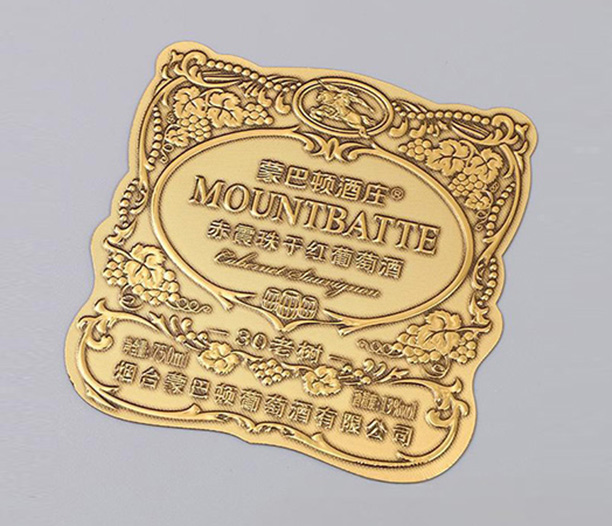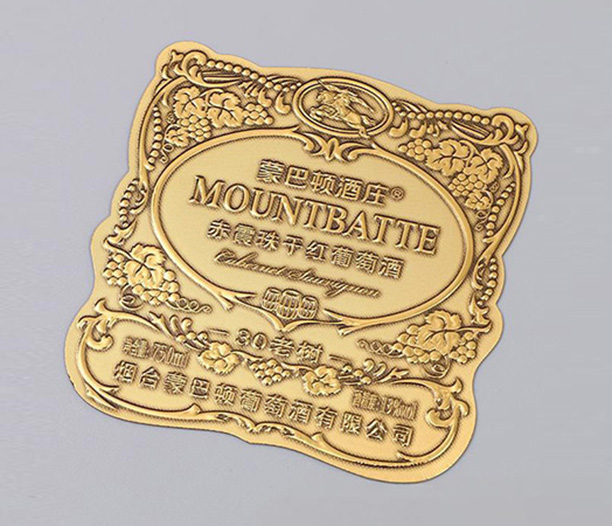In today's fast-paced logistics and supply chain environments, warehouse barcode labels have become an indispensable tool for streamlining operations. These labels are not just simple stickers; they are the backbone of inventory tracking, reducing errors, and enhancing overall productivity. Whether you're managing a small storage facility or a large distribution center, understanding how to leverage warehouse barcode labels effectively can transform your workflow. This article delves into the essentials of warehouse barcode labels, covering their types, selection criteria, and practical applications, while addressing common pitfalls and future trends. By the end, you'll have a clear roadmap for implementing or upgrading your labeling system to meet modern demands.

Understanding Warehouse Barcode Labels and Their Importance
Warehouse barcode labels are specialized identifiers that encode data in a machine-readable format, typically used for tracking inventory, assets, and shipments within a warehouse. They consist of a barcode symbol—often in formats like Code 128 or QR codes—and human-readable text, printed on durable materials to withstand harsh warehouse conditions. These labels are scanned using barcode readers, enabling real-time data capture and integration with warehouse management systems (WMS). This seamless process minimizes manual entry errors, accelerates receiving and shipping processes, and improves inventory accuracy.
The importance of warehouse barcode labels cannot be overstated. In an era where supply chain visibility is critical, they provide a cost-effective solution for maintaining control over stock levels and movement. For instance, during peak seasons, labels help prevent misplacements and delays, ensuring that orders are fulfilled accurately. Moreover, they support compliance with industry standards, such as those in retail or manufacturing, where traceability is mandated. By investing in high-quality warehouse barcode labels, businesses can achieve significant time and cost savings, ultimately boosting their competitive edge.
Types of Warehouse Barcode Labels and Their Applications
Not all warehouse barcode labels are created equal. They come in various types, each suited to specific environments and needs. Common categories include paper labels, synthetic labels, and metal tags, with variations in adhesive strength, durability, and print quality. Paper labels are economical and ideal for short-term use in controlled indoor settings, whereas synthetic labels made from polyester or polypropylene offer resistance to moisture, chemicals, and abrasion, making them perfect for cold storage or outdoor applications. Metal tags, though less common, provide extreme durability for heavy-duty assets.
The applications of these warehouse barcode labels span across multiple warehouse functions. For example, in receiving areas, labels attached to incoming pallets enable quick scanning and data entry into inventory systems. In picking and packing zones, they guide workers to correct items, reducing errors by over 30% in many cases. Additionally, specialized labels with thermal-transfer printing are used for long-lasting legibility in high-traffic areas. Understanding these types helps in selecting the right warehouse barcode labels that align with your operational demands, whether you're handling perishable goods or bulky machinery.
Critical Factors for Choosing the Right Warehouse Barcode Labels
Selecting the appropriate warehouse barcode labels involves more than just picking the cheapest option. Here are five essential factors to consider:
Material Durability and Environment Compatibility: The warehouse environment plays a crucial role in label selection. For instance, in freezers or humid areas, labels must resist condensation and temperature extremes. Opt for materials like vinyl or polyester that can endure such conditions without fading or peeling. This ensures that your warehouse barcode labels remain scannable throughout their lifespan, preventing costly rescans or data loss.
Barcode Printing Technology: The choice between direct thermal and thermal-transfer printing affects label longevity. Direct thermal labels are suitable for short-term use but can fade under sunlight, while thermal-transfer labels offer superior durability for long-term applications. Investing in the right printing method for your warehouse barcode labels ensures consistent performance and reduces replacement frequency.
Adhesive Quality and Application Surface: Labels must adhere securely to various surfaces, such as cardboard, plastic, or metal. Consider adhesive types—permanent, removable, or freezer-grade—based on your needs. For example, in dynamic warehouse settings where items are frequently moved, strong adhesives prevent labels from detaching, maintaining data integrity.
Scanning Efficiency and Label Size: The size and design of the barcode impact scanning accuracy. Labels should be large enough to be read from a distance, especially in high-bay storage, and comply with standard barcode symbologies. Testing sample warehouse barcode labels with your scanners before bulk ordering can identify potential issues early.
Cost-Effectiveness and ROI: While upfront costs matter, evaluate the total cost of ownership, including maintenance and potential errors. High-quality warehouse barcode labels might have a higher initial price but can save money by reducing mis-scans and downtime. Calculate the return on investment by considering factors like labor savings and improved inventory turnover.
By focusing on these factors, you can tailor your warehouse barcode labels to your specific needs, enhancing operational efficiency and reducing waste.
Common Mistakes to Avoid with Warehouse Barcode Labels
Even with the best intentions, many businesses falter in their use of warehouse barcode labels due to avoidable errors. One frequent mistake is neglecting environmental factors, such as placing paper labels in damp areas where they deteriorate quickly. This leads to unscannable codes and data gaps. Another pitfall is inconsistent labeling standards across departments, causing confusion during audits or cross-docking. To avoid this, establish uniform guidelines for all warehouse barcode labels, including placement and data formats.
Additionally, skimping on printer maintenance or using low-quality ribbons can result in poor print quality, making barcodes illegible. Regular calibration and using compatible supplies for your warehouse barcode labels are essential. Lastly, failing to train staff on proper scanning techniques can undermine the system's benefits. Incorporate hands-on sessions to ensure everyone understands how to handle and scan labels correctly, maximizing the investment in your warehouse barcode labeling system.

Future Trends in Warehouse Barcode Labels
The evolution of warehouse barcode labels is closely tied to advancements in technology. Emerging trends include the integration of RFID (Radio-Frequency Identification) with traditional barcodes for enhanced tracking, and the use of smart labels that incorporate sensors for real-time environmental monitoring. These innovations promise to make warehouse barcode labels even more versatile, supporting predictive analytics and IoT (Internet of Things) applications. As sustainability gains prominence, we're also seeing a shift toward eco-friendly materials in label production, reducing the environmental footprint of warehouse operations.
Moreover, cloud-based WMS are making it easier to manage data from warehouse barcode labels, enabling remote access and analytics. By staying informed about these trends, businesses can future-proof their labeling strategies, ensuring that their warehouse barcode labels continue to drive efficiency in an increasingly digital landscape.
Warehouse barcode labels are a fundamental component of modern inventory management, offering a straightforward yet powerful way to enhance accuracy and efficiency. By carefully considering factors like material durability, printing technology, and cost, you can select labels that meet your unique needs. Avoiding common mistakes and keeping an eye on future trends will further optimize your operations. Remember, the right warehouse barcode labels aren't just labels—they're a strategic asset that can transform your warehouse into a well-oiled machine. Start evaluating your current system today to unlock these benefits.
Frequently Asked Questions (FAQs)
Q1: What are the most common materials used for warehouse barcode labels?
A1: The most common materials for warehouse barcode labels include paper, polyester, and polypropylene. Paper labels are cost-effective for indoor, short-term use, while polyester and polypropylene offer durability against moisture, chemicals, and abrasion, making them ideal for harsh warehouse environments. The choice depends on factors like temperature exposure and required lifespan.
Q2: How do I ensure my warehouse barcode labels are scannable in low-light conditions?
A2: To ensure scannability in low-light conditions, use high-contrast labels with dark barcodes on a light background, and consider labels with reflective properties or those designed for use with infrared scanners. Additionally, maintain clean scanner lenses and test labels in actual warehouse settings to optimize readability.
Q3: Can warehouse barcode labels be customized for specific industries?
A3: Yes, warehouse barcode labels can be highly customized for industries like food processing, pharmaceuticals, or manufacturing. This includes using specific adhesives for cold storage, incorporating compliance information, or adding color codes for easy identification. Work with suppliers to tailor labels to your industry's regulatory and operational requirements.
Q4: What is the average lifespan of warehouse barcode labels in demanding environments?
A4: The lifespan varies based on material and environment. Paper labels might last a few months in ideal conditions, while synthetic labels can endure for years in demanding settings like freezers or outdoor storage. Regular inspections and choosing materials rated for your specific environment can extend the life of your warehouse barcode labels.
Q5: How do warehouse barcode labels integrate with inventory management software?
A5: Warehouse barcode labels integrate seamlessly with inventory management software through barcode scanners that feed data directly into the system. This allows for real-time updates on stock levels, location tracking, and automated reporting. Ensure your software supports the barcode symbologies used and that labels are encoded with compatible data formats for smooth integration.
This article provides a comprehensive overview of warehouse barcode labels, emphasizing practical insights for selection and use. By addressing key aspects and common queries, it aims to support informed decision-making in warehouse management.






